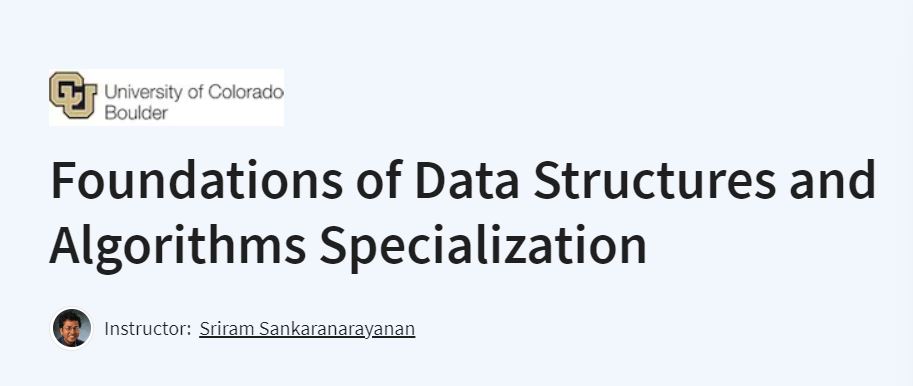Introduction
Understanding data structures is a foundational skill for software engineers, computer scientists, algorithm developers and anyone working with programming at scale. The book Open Data Structures: An Introduction (Open Paths to Enriched Learning) offers a modern, accessible and practical guide to data structures — from lists, stacks and queues to trees, hash tables, skip lists and advanced topics — with an emphasis on clear explanations, hands-on code and practical implementations.
Why This Book Matters
-
The book is designed to be open and freely available, aligning with modern educational values and making the content accessible to a wide audience.
-
It takes a building-blocks approach: presenting each data structure, its operations, how to implement it, and how to analyze its performance. This bridges the gap between algorithmic theory and real code.
-
For learners who already know programming (say in Java or C++), this book helps deepen their understanding of how data structures are designed, how operations work, and what trade-offs exist (time vs space, worst-case vs average case).
-
Because the topics cover both core and advanced data structures, it’s valuable both as a primary learning resource and as a reference.
What the Book Covers
Here are key topics you’ll encounter:
Fundamental Data Structures
You’ll begin with the basics: arrays, singly and doubly linked lists, stacks, queues, deques. You’ll learn how to implement them, how to use them, and how their performance characteristics differ.
Abstract Data Types & Interfaces
The book emphasizes the concept of abstract data types (ADTs): specifying what operations a structure must support (insert, delete, find) without worrying first about how they’re implemented. Understanding ADTs helps you focus on design and modularity.
Trees and Hierarchical Structures
Moving beyond linear structures, the book introduces binary search trees (BSTs), balanced trees (AVL trees, red-black trees), heaps, and priority queues. You’ll explore how trees store data in a hierarchical way and how operations like insert/search/erase work.
Hash Tables and Skip Lists
These are powerful data structures for fast look-ups. You’ll learn how hashing works, how collisions are dealt with, how skip lists provide probabilistic alternatives to balanced trees, and when each structure is appropriate.
Advanced Structures and Analysis
Finally, the book explores advanced topics and rigorous analysis: amortized analysis, amortized time bounds for operations, dynamic arrays, memory allocation costs, structural invariants, and how real-world implementations differ from textbook versions.
Code Implementations and Pseudocode
Throughout, the author provides pseudocode, often actual code in Java/C++ (or other languages depending on edition) so you can see how concepts translate into working code. This is helpful for converting theory into practice.
Who Should Read This Book
This book is an excellent choice if you:
-
Have programming experience (with one of C, C++, Java, Python) and want to deepen your knowledge of data structures.
-
Are studying computer science or software engineering and want a rigorous, yet practical, data-structures textbook.
-
Are preparing for technical interviews or coding contests and want to strengthen your understanding of structures, algorithms and performance trade-offs.
-
Want a resource you can refer back to when implementing your own systems or libraries.
If you are brand new to programming and have never used a data structure beyond lists/arrays, you may find parts of the book challenging. It’s best when you already have basic programming proficiency.
What You’ll Walk Away With
After working through this book, you should be able to:
-
Understand how common data structures (lists, queues, stacks, trees, hash tables) are designed and implemented.
-
Choose the right data structure for a given problem, based on operations you need and performance constraints.
-
Write code (or pseudocode) that correctly implements those structures and their operations.
-
Analyze and compare data structure performance: worst-case, average case, amortized, memory usage.
-
Recognize how data structure design affects real systems (e.g., how hash table choices affect performance in large systems).
-
Use this knowledge to build more efficient, robust software, or prepare for advanced algorithmic challenges.
Tips to Get the Most Out of It
-
Work through examples: Type out or implement each data structure discussed. Seeing it in code helps internalise the logic.
-
Test your implementations: Write small programs that insert, delete, search in your structures, measure performance, see how they differ.
-
Compare different structures: For example, compare a hash table implementation vs balanced tree implementation for the same operations. See how performance differs.
-
Use the book as a reference: After reading, keep the book handy. When you implement a system or library, you’ll often revisit chapters.
-
Solve problems: Use online problem sets (e.g., data-structure practice sites) to apply what you’ve learned. This reinforces the concepts.
Hard Copy: Open Data Structures: An Introduction (OPEL: Open Paths to Enriched Learning)
PDF Kindle: Open Data Structures An Introduction
Final Thoughts
Open Data Structures: An Introduction (Open Paths to Enriched Learning) is a standout resource for anyone serious about data-structures mastery. Its combination of clear exposition, practical code, and thorough analysis makes it a go-to textbook and reference. Whether you’re a student, developer or competitive programmer, this book will equip you with the tools and understanding to implement efficient data structures and make informed design decisions.









.png)


.png)
%20by%20Allen%20B.%20Downey.jpg)










.png)



%20by%20Allen%20B.%20Downey.jpg)









.png)










